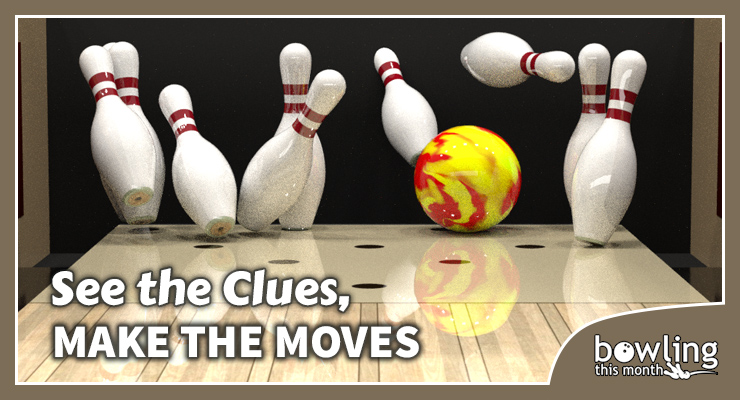Bowling is a sport about repeating shots and making good decisions about how to play the lanes. If two bowlers have equal technical skills, it will generally be the one that makes better decisions that will knock down more pins. This is why being blind to ball motion and the clues it gives you is one of the seven mistakes that hold bowlers back that I identified in Part 1 of this series.
For many bowlers, it is a mystery why certain pins are left standing on seemingly perfect shots. Even with an understanding of the most common leaves, the real difficulty is figuring out what to do about them. Many bowlers have probably been in a situation like this one:
Bowler #1: Another tenpin? Why do I keep leaving these?!
Bowler #2: Your angle is off. All you’ve gotta do is move 1 board left.
Bowler #3: It’s better to back up 6 inches on the approach.
Bowler #4: I usually just move 1 board right.
Whose advice should Bowler #1 follow? Most readers will probably agree with one of these suggestions right away, but it’s not that simple. The truth is that any one of these could be right depending on the situation. This is what makes bowling is so complicated. The way to know which answer is best for which situation is to know what to look for, and what the clues mean.
(Editor’s note: This article is Part 7 of Tyrel’s Seven Common Problems That Can Hurt Your Bowling Scores series. To read the other articles in this series, please click the following links: Part 1, Part 2, Part 3, Part 4, Part 5, and Part 6.)
The first clue: the oil pattern graph
The lane graph can be both useful and misleading. It is a graphical representation of the distribution of oil on the lane. Unfortunately, the lane graph that people see is very skewed, and it also ignores a key influence on ball motion: topography. That said, it is a good guide of where the oil is placed and gives you an idea where to start.
Below is what the lane graphs look like for two of the WTBA patterns, Athens on the ...
This article is only available to Bowling This Month subscribers. Click below to get instant access to this article and all of our other premium instructional content.
Subscribe to Bowling This Month
Already a Bowling This Month subscriber? Click here to log in.
